2020 Ducati Panigale V2 Review - First Ride

The 959 gets a much-needed refresh
For the past few years, the collective motorcycling world has lost its minds with the Ducati Panigale V4. Understandable, considering how much of a departure it is for Ducati to abandon the V-Twin for its flagship sportbike, but also because the Panigale V4 and V4R are absolute knockouts in the engine department. Lost in the hoopla of the Ducati V4 engine sat the lowly 959 Panigale, a pleasant and capable machine, it serves as a gentle reminder to everyone that Ducati hadn’t completely abandoned the V-Twin. A part of the “Super-Mid” category of sportbikes (“Standard-Mid” being something in the 750cc-ish category, we assume?), it’s a little funny to think Ducati’s lower-displacement sportbike, at 955cc, is now larger than it’s former legendary flagship, the 916 family.
2020 Ducati Panigale V2
| Engine | 19.0/20 |
| Suspension/Handling | 12.0/15 |
| Transmission/Clutch | 8.0/10 |
| Brakes | 8.0/10 |
| Instruments/Controls | 5.0/5 |
| Ergonomics/Comfort | 8.0/10 |
| Appearance/Quality | 9.0/10 |
| Desirability | 7.0/10 |
| Value | 7.0/10 |
| Overall Score | 83/100 |
Nonetheless here we are, and with the 2020 Ducati Panigale V2, Bologna is taking its last V-Twin sportbike and giving it a substantial makeover in several areas, except for one – the 955cc Superquaddro V-Twin. It stays the same as before, but is now Euro5 compliant largely thanks to an all-new exhaust/catalyzer design neatly tucked under the bike and exiting just ahead of the rear tire. Lucky US readers may not remember because it didn’t impact them, but in Europe, the previous 959 was forced to wear a huge twin-pipe extended silencer to meet regulations. It was a giant aesthetic wart on an otherwise beautiful motorcycle.
Get the Flash Player to see this player.
Change Is Good
While the spent air now has a cleaner path out, it also has a less-restrictive path in, thanks to new bodywork more closely resembling the Panigale V4 silhouette. As part of the new bodywork, the air intakes are shaped differently than before to provide lower pressure losses and more consistent airflow to the airbox. Once in the combustion chambers, the four fuel injectors (two per cylinder) blast more gas than before. The end result, says Ducati, is a 5hp bump from before (155hp) and 1.5 lb-ft more torque (76.7 lb-ft), with more than 60% of torque available over 5500 rpm. Also keeping in line with the bigger Panigales, at least as far as appearances go, is the single-sided swingarm. A staple in Ducati design, its inclusion in the new Panigale V2 over the previous double-sided arm just feels… right.
Looks, though important, are not the biggest improvement to the Panigale V2 over its predecessor. For 2020, Ducati have equipped the Panigale V2 with the same electronics package as the big brother Panigale V4, giving it a comprehensive electronics suite centered around Bosch’s 6-axis IMU. This now enables:
- Cornering ABS EVO – itself adjustable to three different levels: 1 disables rear ABS, rear lift detection, and front cornering ABS (ideal for racers), 2 allows for a feature called “Slide by Brake” (guess what it can do) and disables rear lift detection (for trackday goers), and 3 provides all the safety features for general road riding or low-grip conditions.
- Ducati Traction Control EVO2 – Now with intervention algorithms developed from the GP18 MotoGP bike, V4R, and V4R World Superbike, meaning the system works more in a predictive manner rather than reactive, meaning it intervenes faster and smoother than before.
- Ducati Wheelie Control EVO
- Ducati Quick Shift up/down EVO2
- Engine Brake Control EVO
Adjusting these settings are all done via toggles and buttons on the bars, with changes visible via the slick, easy to read 4.3-inch TFT display, again mimicking its V4 brothers.
Lastly, there’s the name – Panigale V2. It’s innocuous enough but deserves another mention. Not only does replacing 959 Panigale keep it in line with its Panigale V4 big brothers, I think it also serves as Ducati’s passive-aggressive way of squashing the semantic warriors who insist on calling it an “L-Twin” due to its 90-degree cylinder layout. As one of my fellow motojourno colleagues murmured to me, “All Ls are Vs, but not all Vs are Ls.” If even Ducati calls it a V2, maybe this argument should finally be laid to rest.
Other Bits
As for the rest of the Panigale V2 hardware, Showa provides the fork with 43mm BPF units and a Sachs shock in the rear is 2mm longer than before, providing a 5mm increase in rear ride height, once suspension linkage and swingarm pivots are taken into account. Brembo M4.32 calipers bite on twin 320mm discs, and the Brembo radial master cylinder packs an 18mm piston. Finally, 5mm more seat foam has been added for a slightly cushier ride, and the longitudinal space has been increased 20mm for a bit more room to move around.
Ride Impressions
I find myself saying this a lot lately, but the Panigale V2 is remarkably easy to ride quickly, as proven by our day lapping around the wonderful Circuito de Jerez – Ángel Nieto. The famous grand prix track offers a nice mix of fast and slow corners combined with sizeable straights, perfect for exploring several aspects of any motorcycle’s performance. But the reason I say the “baby” Panigale is so easy is because it’s so manageable. In this age of 200-plus horsepower literbikes, “only” having 155 hp on tap is a lot easier for the brain to handle. The senses aren’t stressed as much, leaving behind more brain cells to concentrate on shifting, braking, and turning the motorcycle.
As the saying goes though, power is nothing without control, and here Ducati have really done its homework. Power delivery is silky smooth and linear, with an excellent connection between the right wrist and the rear tire. Should things get out of control, and the wrist asks more than the tire can handle, the V2’s new electronics kick in to bring the party back to manageable levels (for the most part – nothing is completely crash-proof). IMU-assisted traction control has come a long way, and we got a good feel for this while riding in Sport mode. Here you get all 155 hp, delivered slightly less aggressively than in Race mode. TC is set to level 4 (middle of the road), which was intrusive, but not annoyingly so. It was clear when it was activating, but where older, cruder systems would make the bike act like a bucking bronco, DTC EVO2 greatly minimizes the oscillation effect, keeping the chassis under control while doing its best to drive you forward.
Switch the mode to Race, and you get direct ride-by-wire throttle application while both TC and C-ABS modes drop down to level 2. At this point, if the electronics were kicking in to save the rear Pirelli Diablo Supercorsa SC2 (Diablo Rosso Corsa II Pirellis come standard) from spinning too much, I sure couldn’t tell. Similarly, if C-ABS was intervening while I was aggressively trail braking, I couldn’t tell. However, speaking of brakes, there’s nothing inherently wrong with the Brembo setup, as the initial bite and power of the binders is strong and communicative, but for my personal riding style, I’d prefer to keep the initial bite and add even more stopping power.
While we’re on the topic of little gripes, I found the autoblipper (understandably) limits how quickly you can bang off downshifts in order to protect the engine from damaging overrev. In practical terms, this meant I couldn’t quickly click off three downshifts braking from Jerez’s fast back straight into the tight Dry Sack hairpin. Instead, I’d have to be patient with my three downshifts, spacing each one through the duration of the braking zone. Of course, I could have downshifted with the clutch the old fashioned way, but once you get used to an autoblipper, it’s hard to go back.
On a much lighter note, the extra front-to-back length in the saddle is a nice touch – I just wish Ducati could have added more, as my butt was still creeping up onto the pillion perch when I scooted all the way back in a tuck.
It says something about a motorcycle when I can get this far into a review and only now start talking about the bike’s handling. In the case of the Panigale V2, while I’ve not been a huge fan of the monocoque chassis on the previous 1199 and 1299 Panigales, the reduced power from the V2 pairs nicely with the chassis. It doesn’t get overwhelmed, allowing the bike to dive in considerably while trailbraking. It stays stable once leaned over, though I maintain I’ve never felt levels of front-end communication as I have from Ducati’s trellis frames. Still, the V2 is admirable. Basically, the V2 remains neutral. So much so its handling abilities fade into the background because it’ll do whatever you ask it to. That’s a good thing.
It’s All Good, But…
This is where things get tricky. Judged on its own merits, the Ducati Panigale V2 is an excellent motorcycle. It’s attractive, comes packed with state-of-the-art electronics, and can haul ass around a racetrack for both advanced- and intermediate-level riders (some might disagree, but a motorcycle of this caliber, as easy as it is to ride, isn’t for novices).
The issue is the price. At $16,495, it’s swimming in the same waters as Japanese literbikes and even the Aprilia RSV4 RR, all coming in within a grand or so of the Ducati. At that point, you must be a very specific person who will gravitate towards the V2. Either you are a hardcore Ducatisti, love V-Twins, or simply don’t care about the extra power/displacement the competitors provide. However, before you go dismissing the Ducati, the Panigale V2 is an easy bike to consistently ride quickly, lap after lap – a trait many riders don’t appreciate until it’s too late.
In Gear
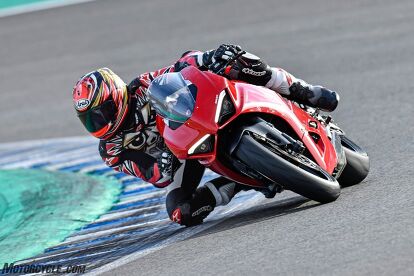
- Helmet: Arai Corsair X Nakagami $980
- Suit: Custom Alpinestars Suit N/A
- Gloves: Alpinestars GP Pro R3 $260
Boots: Alpinestars Supertech-R $500
2020 Ducati Panigale V2 Specifications | |
|---|---|
| Engine | Superquadro: L-twin cylinder, 4 valve per cylinder, Desmodromic, liquid cooled |
| Displacement | 955 cc |
| Bore x Stroke | 100 x 60.8 mm |
| Compression Ratio | 12.5:1 |
| Power | 155 hp at 10750 rpm (claimed) |
| Torque | 76.7 lb-ft. at 9000 rpm (claimed) |
| Fuel injection | Electronic fuel injection system. Twin injectors per cylinder. Full ride-by-wire elliptical throttle bodies |
| Exhaust | 2-1-2-1 system, with 2 catalytic converters and 2 lambda probes |
| Gearbox | 6 speed with Ducati Quick Shift (DQS) up/down EVO 2 |
| Primary Drive | Straight cut gears; Ratio 1.77:1 |
| Ratio | 1=37/15 2=30/16 3=27/18 4=25/20 5=24/22 6=23/24 |
| Final Drive | Chain; Front sprocket 15; Rear sprocket 43 |
| Clutch | Hydraulically controlled slipper and self-servo wet multiplate clutch |
| Frame | Monocoque Aluminium |
| Front Suspension | Fully adjustable Showa BPF fork. 43 mm chromed inner tubes, 4.72 inches of travel |
| Rear Suspension | Fully adjustable Sachs unit. Aluminum single-sided swingarm, 5.12 inches of travel |
| Front Wheel | 5-spokes light alloy 3.50″ x 17″ |
| Rear Wheel | 5-spokes light alloy 5.50” x 17” |
| Front Tire | Pirelli Diablo Rosso Corsa II 120/70 ZR17 |
| Rear Tire | Pirelli Diablo Rosso Corsa II 180/60 ZR17 |
| Front Brake | 2 x 320 mm semi-floating discs, radially mounted Brembo Monobloc M4.32 4-piston callipers with Cornering ABS EVO |
| Rear Brake | 245 mm disc, 2-piston calliper with Cornering ABS EVO |
| Instrumentation | Digital unit with 4,3″ TFT colour display |
| Dry Weight | 388 lb (claimed) |
| Kerb weight | 441 lb (claimed) |
| Seat Height | 33.1 inches |
| Wheelbase | 56.5 inches |
| Rake | 24° |
| Trail | 3.7 inches |
| Fuel tank capacity | 4.5 gallons |
| Number of seats | Dual seat |
| Safety Equipment | Riding Modes, Power Modes, Cornering ABS EVO, Ducati Traction Control (DTC) EVO 2, Ducati Wheelie Control (DWC) EVO, Engine Brake Control (EBC) EVO, Auto tyre calibration |
| Standard Equipment | Ducati Quick Shift (DQS) up/down EVO 2, Full LED lighting with Daytime Running Light (DRL), Sachs steering damper, Auto-off indicators |
| Optional Equipment | Ducati Data Analyser+ (DDA+) with GPS module, Ducati Multimedia System (DMS) and anti-theft |
| Warranty (months) | 24 months unlimited mileage |
We are committed to finding, researching, and recommending the best products. We earn commissions from purchases you make using the retail links in our product reviews. Learn more about how this works.

Troy's been riding motorcycles and writing about them since 2006, getting his start at Rider Magazine. From there, he moved to Sport Rider Magazine before finally landing at Motorcycle.com in 2011. A lifelong gearhead who didn't fully immerse himself in motorcycles until his teenage years, Troy's interests have always been in technology, performance, and going fast. Naturally, racing was the perfect avenue to combine all three. Troy has been racing nearly as long as he's been riding and has competed at the AMA national level. He's also won multiple club races throughout the country, culminating in a Utah Sport Bike Association championship in 2011. He has been invited as a guest instructor for the Yamaha Champions Riding School, and when he's not out riding, he's either wrenching on bikes or watching MotoGP.
More by Troy Siahaan



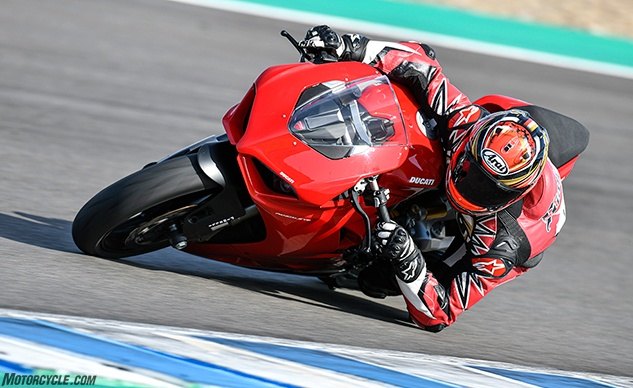





































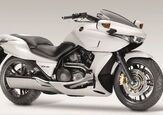
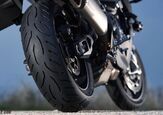
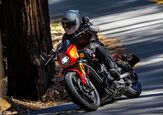
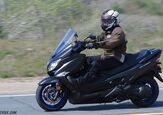
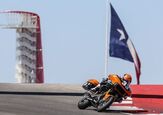
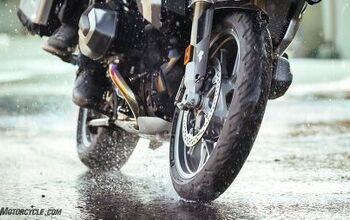

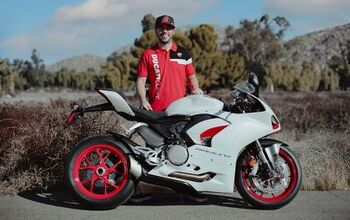
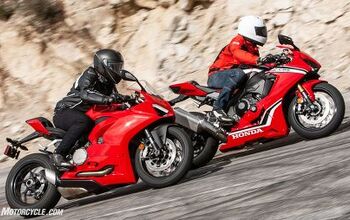
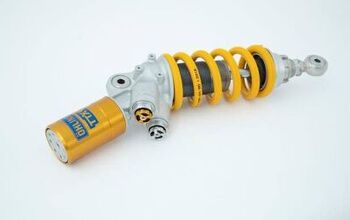
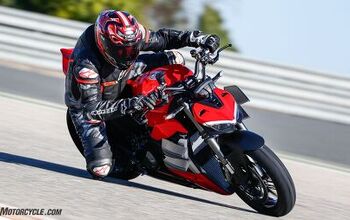
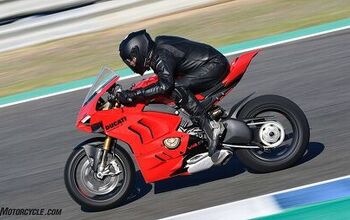
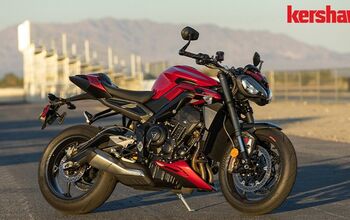
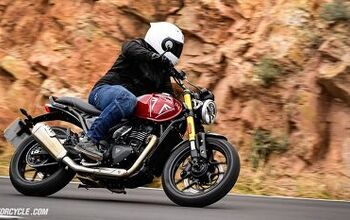
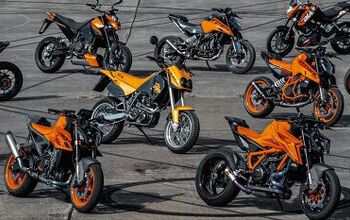
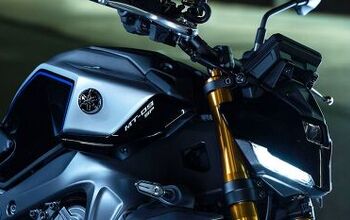
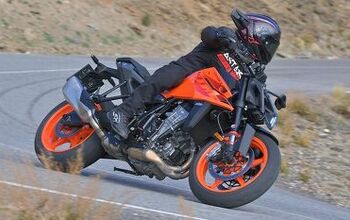
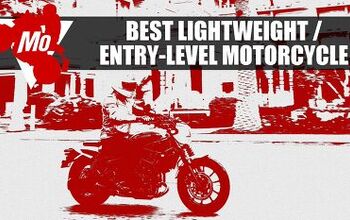
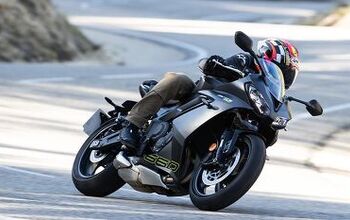
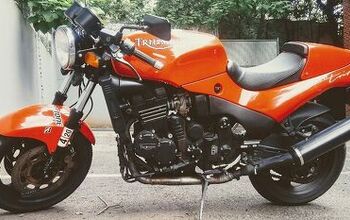
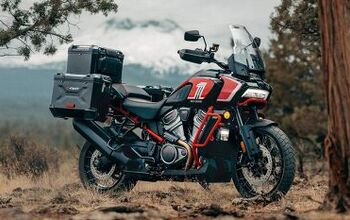
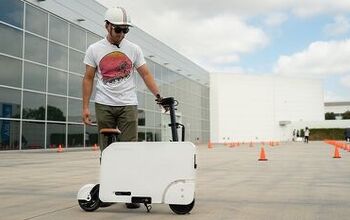
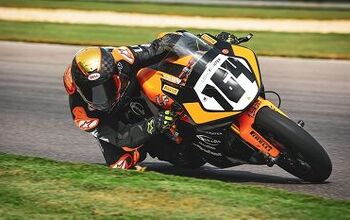
Comments
Join the conversation
I love the sounds and sensations that emanate from fast 90 degree twins. This is a sexy and in scale beast - salivary function is fully activated.
Sucks that racing isn't as prevalent, but this bike is the result. Without displacement guidelines manufacturers are building bikes that they think people want. I think they are right.